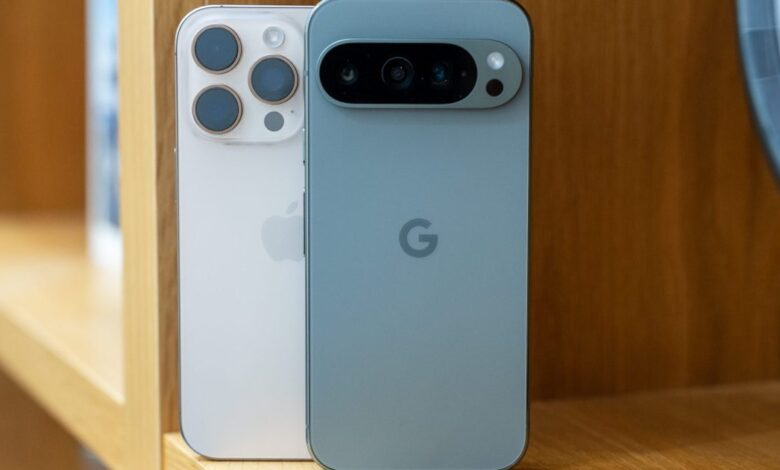IOS Security Shines but Lags Behind Android in One Crucial Aspect

The Battle for Smartphone Security: Android vs. iPhone
in the world of smartphones, there's a common belief that iPhones offer better security than their Android counterparts.This perception stems from the open nature of Android, which can sometimes lead to malware and dubious apps infiltrating devices. Additionally, users often face phishing attempts through calls and texts.
While practicing good digital habits is essential, even the most tech-savvy individuals can fall victim to scams. Fortunately, Google has ramped up its efforts in recent years to enhance user protection with features that set it apart from Apple’s offerings.
AI Steps Up for User Protection
Let’s be honest; we’re all a bit fatigued by the constant buzz around artificial intelligence (AI). At Google's recent I/O developers conference, “AI” was mentioned an astonishing 92 times while “Gemini” came up 95 times. However, behind this hype lies a significant advancement: Google has integrated AI into its messaging and phone applications to detect suspicious behavior during calls and text exchanges.
One notable feature is AI-driven scam detection within Google Messages and Phone apps. This technology focuses on conversational scams where fraudsters manipulate victims into revealing sensitive details or making unauthorized transactions.
Scammers often impersonate representatives from banks or government agencies—something even law enforcement warns about—using tactics like fake job offers or delivery scams. To combat this issue, Google employs clever models designed to identify unusual patterns in conversations and provide real-time alerts when something seems off.
When potential scams are detected during chats or calls—especially when discussions involve payments or deliveries—the system will notify users with visual cues on their screens as well as audio alerts. Users also have the option to end conversations promptly if they feel uncomfortable.
Stopping Scammers before They Strike
These protective measures are relatively new but build upon systems established over several years. In 2022 alone, Google's machine learning tools flagged approximately 1.5 billion spam messages each month across its platforms.As scammers continuously evolve their tactics—including using screen-sharing techniques—Google has implemented safeguards against these risks as well. As an example, one-time passwords (OTPs) sent via SMS or email will not display content if screen sharing is active on a device; thus preventing scammers from accessing sensitive information directly through shared screens.
Moreover, any app generating OTP notifications remains hidden during screen-sharing sessions for added security measures while users enter personal details like usernames and credit card numbers.
Android 15 also introduced enhanced cellular protections aimed at thwarting advanced attacks involving cell site simulators—a tactic used by some scammers to intercept communications without detection—and warns users if their connection lacks encryption.
Calls remain one of the most effective ways for fraudsters to execute social engineering schemes since they often pose as trusted company representatives. To counteract this approach effectively, Google has developed a verified call system that displays both the caller's name and business logo alongside an official badge right on your incoming call screen.
Keeping Texts Safe with Smart Features
Similar precautions apply within Google Messages where machine learning algorithms actively search for signs of fraudulent activity such as fake job offers or package delivery scams before alerting users accordingly by moving suspicious texts into spam folders automatically when necessary.
Since text messages come with unique risks—including links leading to malware—the app blocks messages containing links from unknown senders while issuing warnings about potential threats associated with them.
To further protect against identity theft—which is increasingly prevalent due in part as of deepfake technology—Google introduced contact key verification based on cryptography ensuring you’re communicating securely with known contacts rather than impostors who may have stolen your SIM card.This verification process involves scanning QR codes or comparing numbers between contacts so that any impersonation attempts can be flagged early in communication exchanges—a proactive measure worth considering before engaging online criminals directly!
proactive Measures Against Scams
One innovative feature called Call Screen allows an AI assistant answer incoming calls first asking callers about their identity before you pick up! This helps filter out unwanted interactions right away without giving scammers room for manipulation once connected!
If you do answer but suspect foul play? The built-in AI systems will alert you if someone tries convincing you disable crucial safety features like Google Play Protect during conversation! Alerts pop up mid-call should anyone suggest sideloading risky applications too!
Interestingly enough though Apple devices only offer basic options such as blocking/reporting spammy communications—they lack comprehensive proactive detection methods found within Android’s ecosystem today!
for those concerned about rising threats posed by call/text-based frauds investing in an Android device could prove beneficial especially opting specifically towards one manufactured by Pixel series ensuring access early-on all latest safety enhancements available!
It’s fascinating how quickly things change; once seen primarily through reputation alone now it appears clear who leads innovation regarding smartphone security advancements today!





